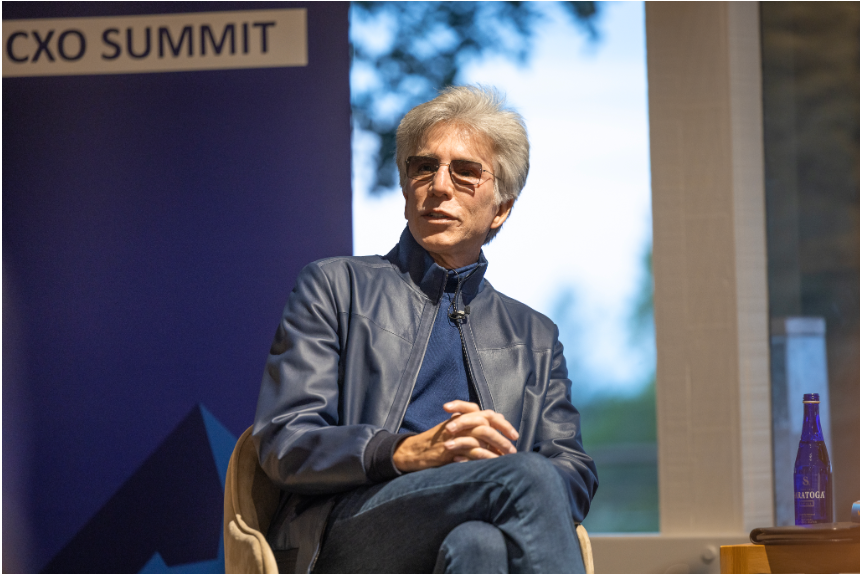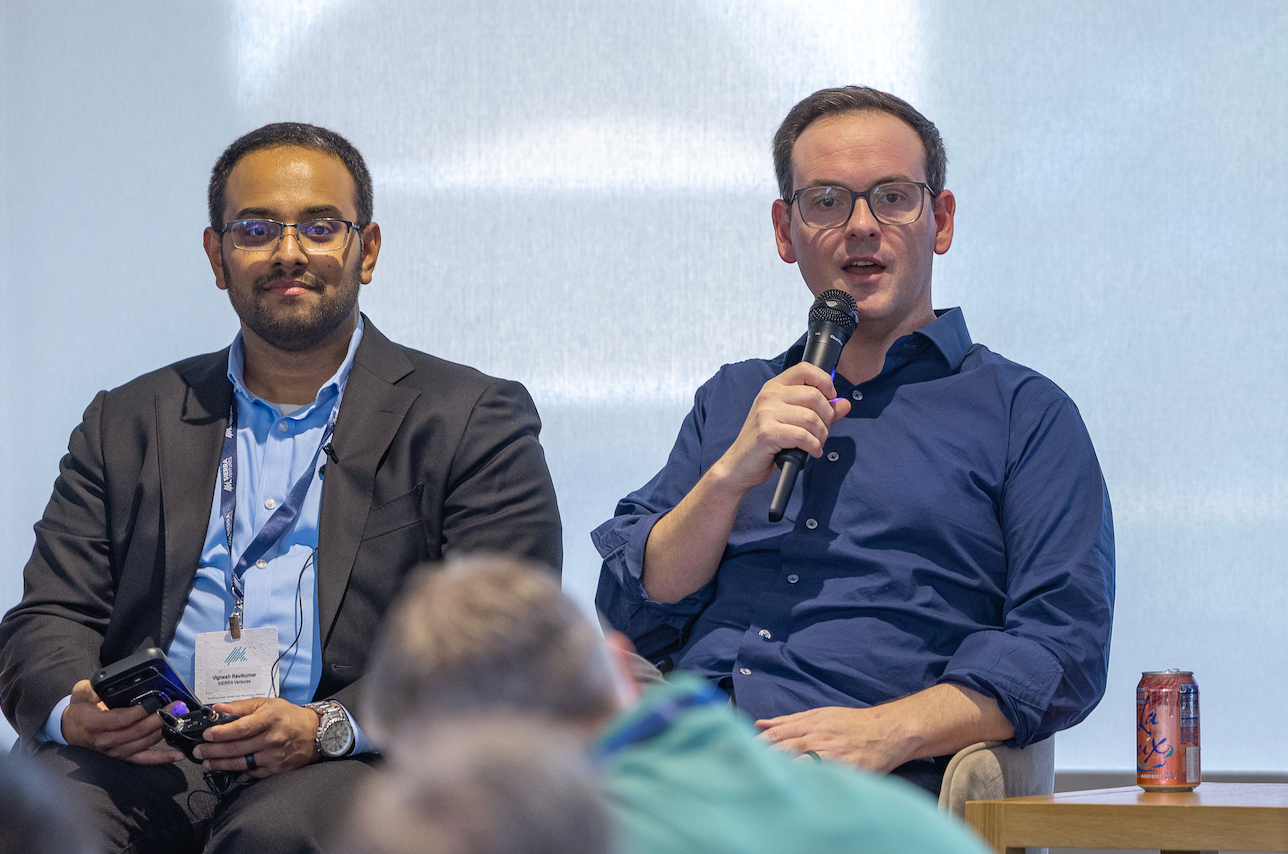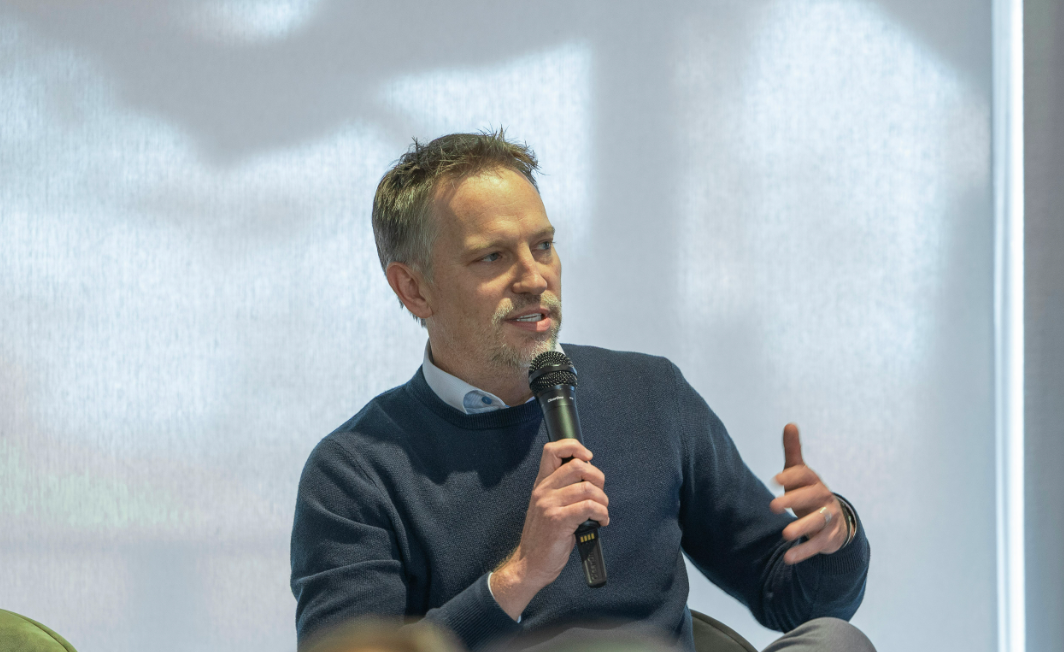How Enterprise Leaders Are Rewriting the Playbook for the AI Era

The Sierra Ventures CXO Summit returned for its 20th year, bringing together Fortune 1000 executives, technology leaders, and founders for a full day of conversation around one central theme: The AI Imperative.
Over two decades, we have seen the enterprise evolve through major technology shifts, but this year felt different. The discussion was not about experimentation. It was about execution.
ServiceNow’s Chairman and CEO, Bill McDermott, and LinkedIn’s CEO, Ryan Roslansky, headlined the event with executives from Snowflake, Salesforce, Perplexity, Reflection AI, CoreWeave, Cloudflare, Kaiser Permanente, and Cigna Healthcare weighing in on the future of AI.
Speakers shared a common message: the next era of work is being shaped by AI systems that span teams, redefine productivity, and amplify human potential.
From Promise to Proof
A single theme ran through every discussion: the experimentation phase is over. The leaders pulling ahead are those deploying AI at scale and proving impact in weeks, not quarters.
Enterprises are now using AI to rewire how they operate, from forecasting demand and managing risk to serving customers in new ways. The goal has shifted from testing productivity tools to building AI into the operational fabric of the business.
Bill McDermott underscored that momentum. “Tools in silos rarely deliver ROI because processes span teams,” he said. For him, success starts with integration, not abstraction. Connect systems first, automate second, and measure outcomes people can actually feel.

We saw this shift reflected across the companies in the room. In healthcare, Kaiser Permanente moved from pilots to production by rolling out ambient clinical listening at real scale. In less than a year, the program reached “over 15,000 physicians” who now convert physician-patient conversations into notes in real time, freeing up minutes on every visit and improving documentation quality. Cigna explained the foundational lift behind efforts like this.
Decades of standard operating procedures were written for humans, not software agents. The near-term work is to “transform and translate all of those SOPs… into an AI-enabled SOP that then the agents can read.” Progress will be judged by trust as much as speed. In Cigna’s words, “it’s not about who is first, it’s about who is the first that you will trust.”
The conversation is no longer about whether AI can create value, but how fast it can be embedded into workflows and how visibly it changes results.

Systems That Think
Snowflake’s EVP of Product, Christian Kleinerman, described the next phase of enterprise AI as the rise of systems that think. The companies leading this shift are connecting AI directly to their enterprise data, where accuracy, security, and governance define success.
“AI without enterprise data is called ChatGPT,” he said. It was a clear reminder that the real advantage comes from combining large models with the unique context inside every company, from revenue definitions to vacation policies. Kleinerman emphasized that innovation now depends on making structured and unstructured data a “non-issue,” allowing teams to focus on solving business problems instead of managing pipelines.

Glean’s Tony Gentilcore detailed why many agents stall before they scale. The blockers are access and governance across silos, not model capability. His prescription was pragmatic. Connect everything, preserve permissions, and use a hybrid of semantics and traditional retrieval so results reflect what the company actually knows. The goal, as he put it, is simple in theory and hard in practice. If “agents only knew what my company knows,” productivity would jump.

Perplexity’s Dmitry Shevelenko echoed that evolution. He painted a future where knowledge systems move beyond search into conversation, where people do not hunt for data but engage with it. In that world, the differentiator will not be model size but the quality of memory and depth of understanding that AI systems bring to each interaction.
Intent to Action in Hybrid Physical Digital Businesses
CIOs from Cloudflare, CoreWeave, and Avis Budget Group described how AI is shifting enterprise focus from automating processes to understanding intent. The goal is no longer to make systems faster but to make them more intuitive, capable of translating what people mean into what the business does. As one leader put it, the new paradigm begins with human intent and ends in automated action.
That shift is visible across industries. Organizations are using real-world signals such as flight delays, service requests, and customer behavior to anticipate needs and respond before friction appears. The focus has turned from internal efficiency to creating seamless experiences that feel intelligent, adaptive, and personal.
This evolution also requires discipline inside organizations. Even the most advanced infrastructure teams are learning that scaling AI starts with small, provable wins, builds trust through measurable outcomes, and depends on strong governance to ensure safety and compliance. The companies pulling ahead are those treating AI not as a feature, but as a new framework for how people, systems, and data work together.
The Human Equation
If technology is transforming how we work, it is also redefining what it means to lead. Ryan Roslansky, CEO of LinkedIn, spoke about navigating the messy middle of the labor transition, the uncertain period between productivity gains and workforce adaptation.

“Every job is a set of tasks,” he said. “And some of those tasks will be automated. The opportunity is helping people learn the new ones.” At LinkedIn, that mission is fueled by one of the world’s most dynamic data graphs, updating over five million times a minute across 1.2 billion members and 60 million companies.
Adoption is cultural before it is technical. Salesforce’s COO of AgentForce, Vivienne Wei, paired top-down urgency with bottom-up momentum. “In three weeks, we got to 90% adoption daily usage” by running “No meeting Thursday” and “AI Thought Luck” sessions where engineers demoed working use cases, sparked cross-team collaboration, and linked recognition to real usage.
Several speakers noted that agent management is becoming a discipline in its own right. Wei called out emerging “agent managers” who design bots and curate data with subject matter experts while product and platform teams provide guardrails.
Empathy, collaboration, and curiosity remain the true competitive advantages.
Trust as a Competitive Advantage
Across every discussion, trust emerged as the foundation for enterprise AI. Security, governance, and transparency are no longer separate disciplines. They are table stakes for adoption. As Kleinerman shared, “We’ll take a bake-off all day long” when it comes to proving security and reliability.
Regulated industries are also setting the bar. Kaiser is prioritizing embedded AI inside systems of record and using its own data centers and Nvidia clusters to control cost and risk. Cigna noted the CFO scrutiny that follows token-based usage, recalling that “nine months ago the CFO was like, what is this token thing being discussed costing so much.” The guidance to peers was straightforward. Expect a period where old and new systems run in parallel, and be precise about the cost story you take to the board.
Executives in the room agreed that success in 2025 and beyond will hinge less on raw model performance and more on user confidence. Organizations that can guarantee data integrity and explainability will earn both market trust and internal buy-in.
Looking Ahead
As we look toward 2026, one message from the Summit was clear. AI is not just changing technology. It is changing the world. It is changing tempo. Projects that once took quarters now take weeks. Teams that once operated in silos are aligning across the org chart. Leaders are learning that the biggest breakthroughs come when human creativity and machine intelligence meet in the middle.
Other constants emerged across healthcare, cloud, and transportation: 1) Integrate first. 2) Govern access. 3) Start where scale is guaranteed. This creates initial results that people can feel. The rest follows.
Two decades in, the Sierra Ventures CXO Summit remains a place where that convergence happens and where enterprise leaders gather not to speculate on the future, but to build it.
Photos From the 20th Annual CXO Summit


SIERRA Ventures Ben Yu and Ioannis Antonoglou, the Chief Technology Officer (CTO) and co-founder of Reflection AI.

SIERRA's Tim Guleri.

CoreWeave CIO, Sandy Venugopal.

CXO Lunch
